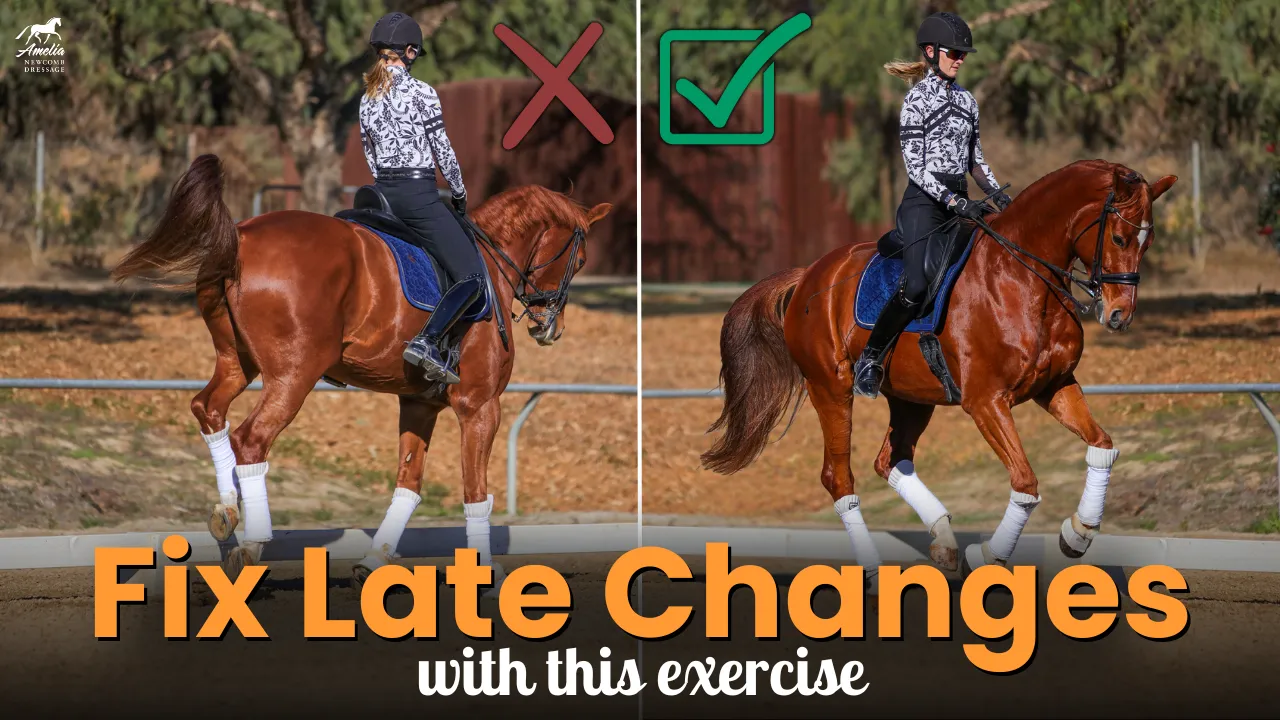Does your horse brace, hollow, or toss their head when you ask for a trot or canter? Do you feel like your horse is unresponsive and not listening? If this sounds familiar, you’re not alone. One of the biggest challenges in riding is smooth, consistent transitions. Transitions are where training either comes together—or falls apart.
In this video, I’m riding Mercurio and breaking down how to improve your transitions with a simple exercise, what to look for when evaluating your transitions, and the one mistake I see riders make over and over again.
Want to take a deeper dive into transitions? Check out my Transitions Workshop! Inside, you will find a full lecture, guided ride-along podcast, and step-by-step exercises to help you improve all types of transitions.
Why Transitions Matter
There’s a great quote: “Training happens in the transitions.” That’s because transitions test your horse’s balance, responsiveness, and connection. When things go wrong—head tossing, stiffness, loss of rhythm—it’s often in the transitions.
Good transitions are essential for competition scores, but more importantly, they’re how we know if the horse is truly on the aids.
Start with the Basics
To improve transitions, go back to simple trot–walk–trot transitions on a circle line. This shape helps maintain bend and encourages better inside leg to outside rein connection—two ingredients you need for a balanced transition.
Here’s how to begin:
- Check your position – Keep your ear, shoulder, hip, and heel alignment. Avoid leaning forward during transitions.
- Ask clearly – Start by lightly closing your calf. If there’s no response, follow up firmly with your heel. Your goal is an immediate, smooth response to a soft aid.
- Maintain the frame – Ideally, the horse stays in the same outline through the transition and not lift their head and neck.
What to Look For
When assessing a transition, look at two things:
- Responsiveness to your aidDid your horse respond immediately when you closed your leg? Or did you have to push and kick to get a reaction?
- Contact and frameDid the horse stay round and soft? Or did they get heavier, curl behind the bit, or come above the contact?
If you maintain both responsiveness and contact, you’re on the right track—and you’re building your horse’s topline every time you do it well.
Next Steps
Once your trot–walk–trot transitions feel solid and responsive, you can begin working on trot–canter–trot transitions. The key principles remain the same: give a clear, soft aid, maintain connection and balance through the transition, and watch your horse’s frame and contact closely. Look for signs that your horse stays round, supple, and consistent through the gait change. These transitions not only improve your scores but also build strength, engagement, and self-carriage.
Happy Riding!
Amelia
P.S. Transitions are something I focus on daily with my horses—and I’d love to support you in developing yours. My Transitions Workshop includes a full theory lecture that dives into the details of what makes a great transition, along with practical exercises to help you troubleshoot and improve. You’ll also get access to a ride-along podcast and step-by-step video exercises to guide you through the process of improving your transitions! Click here to learn more about the workshop.












































